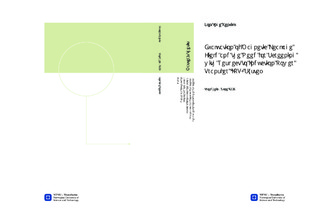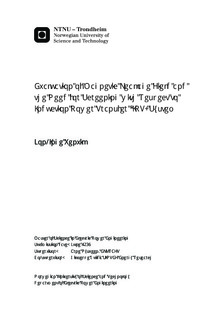| dc.contributor.advisor | Nysveen, Arne | nb_NO |
| dc.contributor.advisor | Guidi, Giuseppe | nb_NO |
| dc.contributor.author | Venvik, Jon-Inge | nb_NO |
| dc.date.accessioned | 2014-12-19T13:56:12Z | |
| dc.date.available | 2014-12-19T13:56:12Z | |
| dc.date.created | 2014-09-23 | nb_NO |
| dc.date.issued | 2014 | nb_NO |
| dc.identifier | 749358 | nb_NO |
| dc.identifier | ntnudaim:10714 | nb_NO |
| dc.identifier.uri | http://hdl.handle.net/11250/257914 | |
| dc.description.abstract | This report considers a system for transferring electric power from shore to ships for charging of electrical driven ferries by use of induction power transfer (IPT). The IPT works by leading an alternating current through a coil stationed on shore which creates a time-varying magnetic field. This magnetic field will, through an air gap induce a voltage in another coil stationed on a ship, making it possible to transfer power wirelessly. This system will, as well as transferring power to the receiving coil also produce a time-varying magnetic field in the nearby surroundings which practically can be considered a leakage field, but can to some extent also be defined as electromagnetic radiation. In Norway, regulations regarding both ionizing and non-ionizing radiation are given by the Norwegian Radiation Protection Authority (NRPA). The IPT system operates in frequencies from 3 5 kHz and therefore the magnetic leakage field is considered as non-ionizing radiation. Requirements given by NRPA do not say anything specific about permitted levels of magnetic field strength because it varies with frequency, but says generally that it should be as low as practically possible and refer to reference levels given in guidelines published by the International Commission on Non-Ionizing Radiation Protection (ICNIRP). To obtain an overview of the radiation created by the IPT and how it complies with the reference levels, the system is modelled in COMSOL Multiphysics with one specific configuration of the coils and the current. The simulations have shown that the IPT will create time-varying magnetic fields that cause radiation above reference levels given in the ICNIRP guidelines; however the effect to the surroundings can be significantly reduced by use of screening such as aluminum plates in various configurations. The method used for modelling the IPT system has been verified by modelling an actual coil found in storage at SINTEF Energy research. This coil had been energized with a current of 10A and the magnetic flux density created by the energized coil has been measured and compared with COMSOL simulations. | nb_NO |
| dc.language | eng | nb_NO |
| dc.publisher | Institutt for elkraftteknikk | nb_NO |
| dc.title | Evaluation of Magnetic Leakage Field and the Need for Screening with Respect to Induction Power Transfer (IPT) System | nb_NO |
| dc.type | Master thesis | nb_NO |
| dc.source.pagenumber | 104 | nb_NO |
| dc.contributor.department | Norges teknisk-naturvitenskapelige universitet, Fakultet for informasjonsteknologi, matematikk og elektroteknikk, Institutt for elkraftteknikk | nb_NO |

